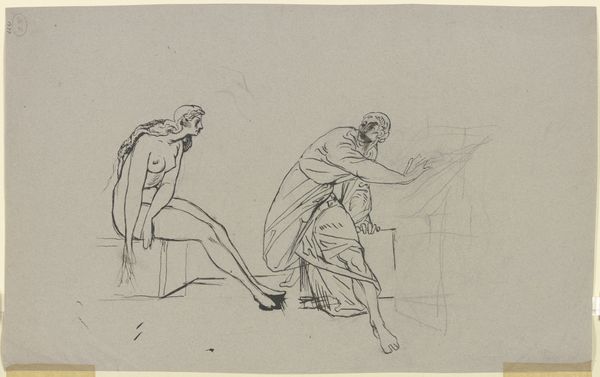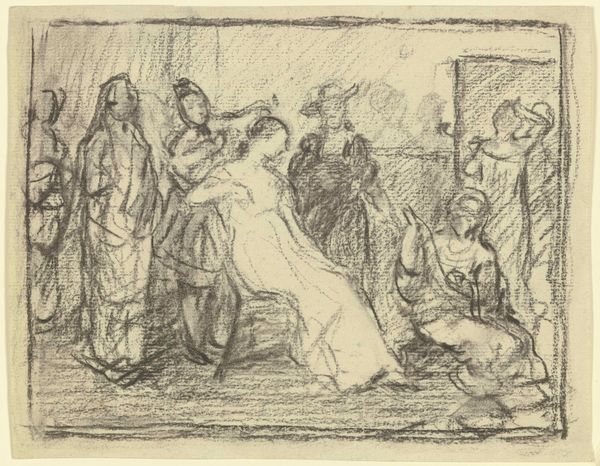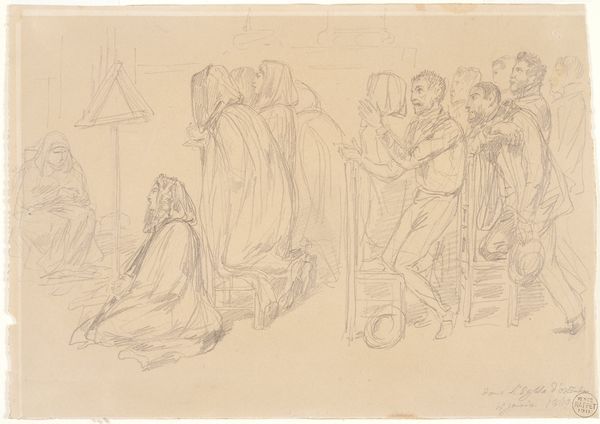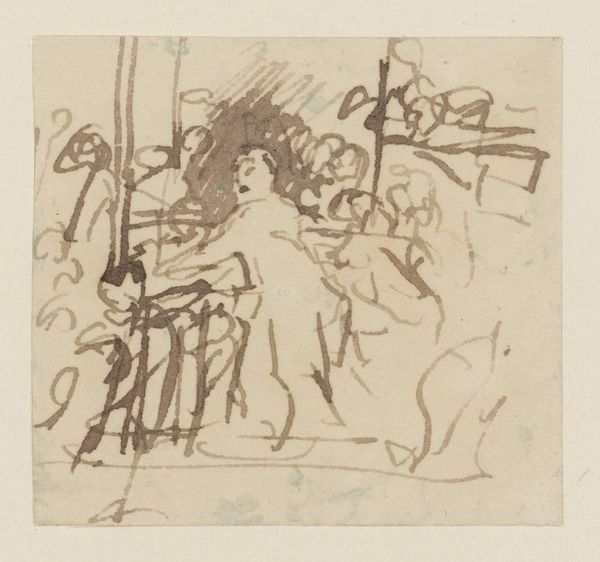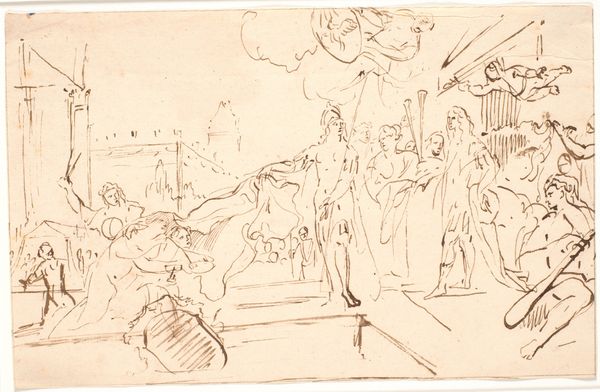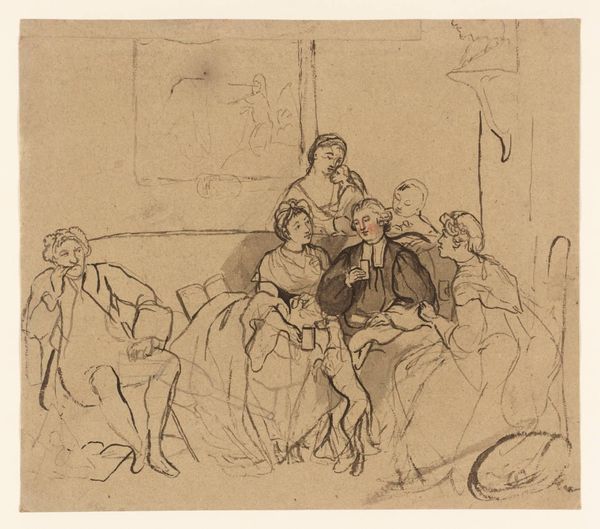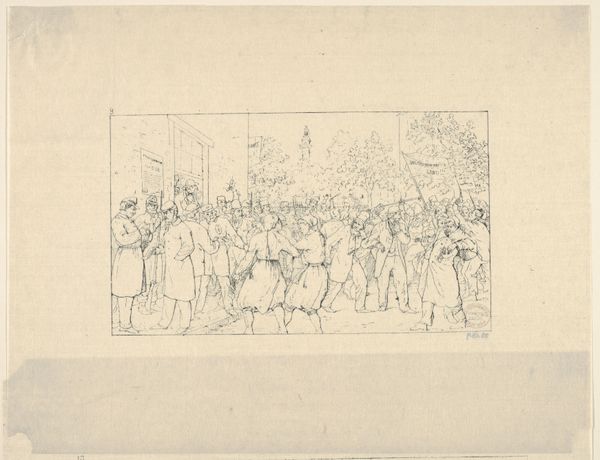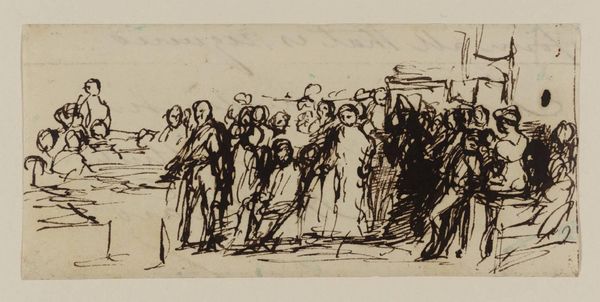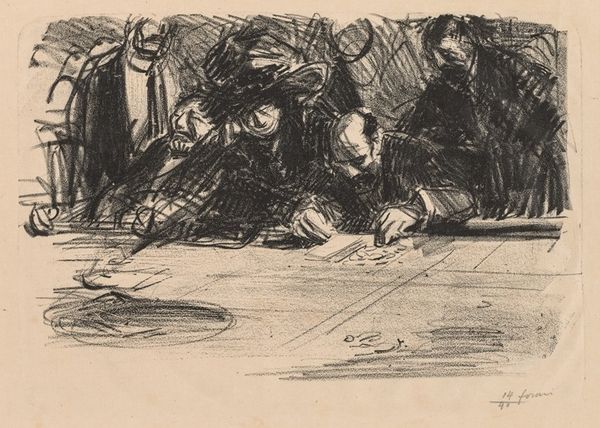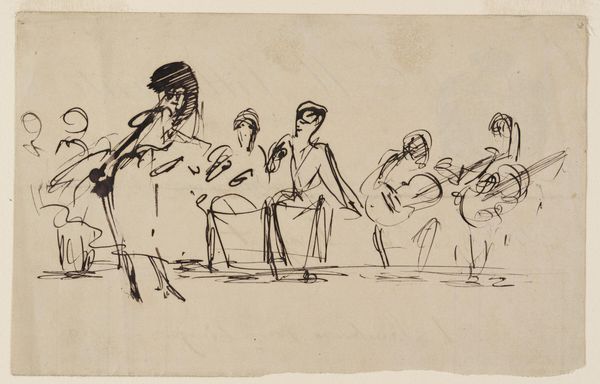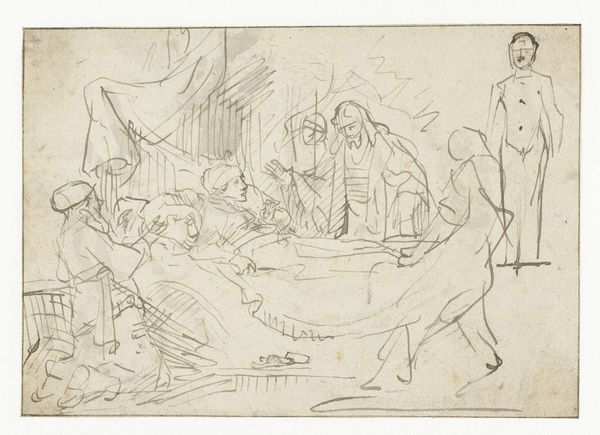
drawing, ink, pen
#
drawing
#
ink drawing
#
narrative-art
#
pen sketch
#
ink
#
pen
#
history-painting
Dimensions: overall: 6.3 x 13.6 cm (2 1/2 x 5 3/8 in.)
Copyright: National Gallery of Art: CC0 1.0
Curator: "The Laying Out of Christ" is the title, believed to be by Sir George Hayter. It's rendered in ink, a pen sketch really, capturing a moment of intense grief. What strikes you about this image initially? Editor: Bleakness. That’s the first word that jumps to mind. The spare lines amplify the profound sorrow—almost like a half-remembered nightmare sketched onto the page. The figures seem engulfed by grief. Curator: Yes, Hayter uses very minimal lines but evokes profound pathos. In Christian iconography, the laying out, or Lamentation, is pivotal. It's a visual expression of mourning, where the physical and emotional burden is placed on the figures surrounding Christ. Editor: And notice the repetition in the composition. All those downward curves mimicked by the figures...It’s a somber rhythm, don't you think? And I detect a crowd? It is the contrast with the isolated foreground figures what is making the drawing for me. Curator: The huddled figures in the background? Those echo traditional depictions of the crowds witnessing the crucifixion, transformed here into mourners. This juxtaposition is Hayter’s artistic choice; a study that may speak to his personal beliefs or feelings about loss. In many ways the "laying out" scene speaks to a time of crisis where faith and community intersect. Editor: And in ink, of all mediums! Something about it feels immediate and raw, capturing that visceral sense of pain before it transforms into something...sanitized, maybe? Almost feels like I can hear it: weeping women, hushed prayers... the quiet scrape of a pen moving frantically across paper. Curator: Exactly. The immediacy is compelling, particularly in the context of historical painting, where these narratives are often staged with meticulous detail and grandeur. Here, Hayter strips it bare, laying the emotional vulnerability raw before us. Editor: This isn't history; this is feeling rendered as line. A memento mori...but more immediate, less polished. Very moving. Curator: Indeed. And I'm left contemplating what beliefs and memories this powerful image leaves us with. Editor: Me too. Thanks for this melancholic gem today.
Comments
No comments
Be the first to comment and join the conversation on the ultimate creative platform.
